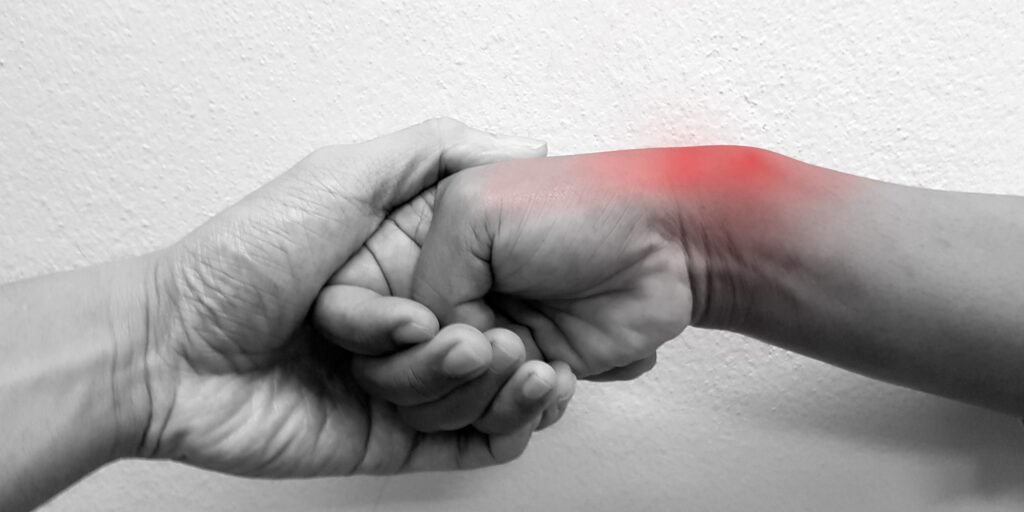
De Quervain syndrome, also known as De Quervain tenosynovitis, is a painful condition affecting the tendons on the thumb side of the wrist. It typically occurs due to overuse, repetitive movements, or strain on the wrist, leading to inflammation and irritation of the tendons in the thumb. This syndrome can significantly impact one’s daily activities and quality of life. This blog post will delve into the causes, symptoms, diagnosis, and physiotherapy interventions for De Quervain syndrome.
How does De Quervain Syndrome occur?
The primary cause of De Quervain syndrome is repetitive hand and wrist movements, especially those involving repetitive radioulnar deviation (the hammering movement). Activities such as gaming, gardening, carrying a baby or pet, playing musical instruments or playing racket sports in such a manner can contribute to the development of De Quervain syndrome. Additionally, factors such as previous wrist injury, pregnancy and rheumatoid arthritis may also put you at risk of De Quervain syndrome.
What are the signs and symptoms of De Quervain Syndrome?
Individuals with De Quervain syndrome often experience pain and swelling at the base of the thumb. The pain worsens with thumb and wrist movement, making activities like gripping objects or making a fist particularly uncomfortable. In some cases, a “snapping” sensation may be felt when moving the thumb. As the condition progresses, you may develop weakness and difficulty performing everyday tasks.
Diagnosing De Quervain syndrome typically involves a thorough physical examination by a physiotherapist or a doctor. The Finkelstein test, where the patient makes a fist with the fingers closed over the thumb followed by ulnar deviation of the wrist, is commonly used to elicit pain characteristic of De Quervain syndrome. Imaging studies such as ultrasound or MRI may be ordered to rule out other potential causes of wrist pain.
Physiotherapy Treatments for De Quervain Syndrome
Physiotherapy for De Quervain syndrome aims to reduce pain and inflammation, and restore normal function of the wrist and thumb.
In the early stage, when rest for the affected tendons is recommended, splints or braces to immobilize the thumb would be prescribed. You may also be advised to apply an ice pack to the affected area for pain control.
Therapeutic exercises are required in two folds: (1) in the early stage for the uninvolved muscles and joints in the hand affected by De Quervain syndrome to maintain their strength and mobility while the thumb tendons are under relative rest, and (2) in the later stage when the pain and inflammation are reduced, for reconditioning the thumb tendons and build their capacities (e.g. strength, flexibility, etc.) to cope with their work, home duties and sports requirements. On some occasions, manual therapy, such as soft tissue mobilization and joint mobilizations, may be employed by physiotherapists to improve tissue flexibility and restore normal joint mechanics.
In addition, your physiotherapist would assess your work environment, activities of daily living, and ergonomic practices to identify potential triggers for De Quervain syndrome. S/he will then advise you on the proper body mechanics, posture, and wrist/thumb positioning to help prevent worsening of symptoms.
Conclusion
De Quervain syndrome can significantly impact an individual’s hand function and quality of life. Physiotherapy interventions help you manage this condition, focusing on reducing pain and inflammation and restoring normal wrist and thumb function. Through immobilization, therapeutic exercises, manual therapy, and ergonomic education, physiotherapists can help you effectively manage your symptoms and return to work and sports.
References:
1. Adams, JE et al. Journal of the American Academy of Orthopaedic Surgeons 23(12):p 741-750, December 2015. | DOI: 10.5435/JAAOS-D-14-00216